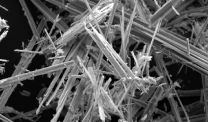A Look at Three Decades of Real-World Mesothelioma Statistics
Research & Clinical TrialsWritten by Tim Povtak | Edited By Walter Pacheco

Despite clinical trials that often produce inflated expectations, real-world survival rates for pleural mesothelioma have failed to advance significantly over the past three decades, according to one recent study in Canada.
Celebrated treatment advances have fallen short for the average patient diagnosed with this rare cancer caused by exposure to asbestos particles.
“This is a story about a lack of progress. What we’ve seen is kind of underwhelming,” Dr. Paul Wheatley-Price, associate professor of medicine at University of Ottawa and thoracic oncologist at The Ottawa Hospital Cancer Centre, told The Mesothelioma Center at Asbestos.com. “It does go to show that mesothelioma remains a disease with real unmet needs.”
Wheatley-Price co-authored the recent study tracking nearly 30 years of pleural mesothelioma patients at the well-respected Ottawa Hospital Cancer Centre in Canada’s capital city.
Clinical Lung Cancer published the study earlier this year. The results were presented May 7-9 at the virtual International Mesothelioma Interest Group conference.
“We’re interested in generating real-world evidence, which comes directly from the clinic, a what’s-going-on-in-the-trenches picture,” said Wheatley-Price, who also serves as president of Lung Cancer Canada. “There’s been progress, but not all that much.”
No Marked Improvement in Overall Mesothelioma Survival
The one-institution, retrospective study involved 337 patients from 1991 to 2019 who were diagnosed and treated for pleural mesothelioma.
For comparison purposes, they were separated into three different decades based on diagnosis dates.
The most obvious trends from the first decade to the third were the percentage of female patients, which went from 11.6% to 20.5%; and the age at diagnosis, which went from 65.8 years to 75 years.
Surprisingly, the median overall survival hardly increased, from 9 months (1991-1999) to 9.3 months (2000-2009) to 10 months (2010-2019).
The lack of significant survival improvement through the years could be explained, at least partially, by a higher percentage of patients with the toughest-to-treat subtype of mesothelioma – sarcomatoid – in the third decade. There also was a higher percentage of patients diagnosed in stage 4, and they were older in the third decade.
“There were a few factors to suggest people from the third decade would do worse, but in fact they did a little better,” Wheatley-Price said. “So, the numbers are not as disappointing as they may seem.”
The study did not include patients with peritoneal mesothelioma, a more easily treated type of disease.
Of the 337 patients included in the study, 62.9% were smokers or former smokers and 59.9% had the epithelial subtype of mesothelioma. The average age was 71.
Study Examines Treatment Tools
The study looked at the effectiveness of three tools used in mesothelioma management – indwelling pleural catheters, pemetrexed chemotherapy and extrapleural pneumonectomy surgery – but did not separate them by decades.
Although the EPP surgery has been used less in recent years, the patients who underwent the most aggressive surgery had a median survival of 27.5 months, compared to just 9.2 months for those who did not receive it.
The one-year, three-year and five-year survival rates in the EPP group were 73.9%, 43.5% and 24.2%, respectively.
Pemetrexed, also known by brand the name Alimta, was FDA approved in 2004. Patients receiving it had a median survival rate of 14.2 months, compared to 12.7 months for those receiving chemotherapy not using pemetrexed.
The indwelling pleural catheters, which have emerged as a convenient treatment for pleural effusions that accompany mesothelioma, were used in almost half of the patients treated in the third decade of the study.
Median survival was 14.2 months for those receiving a catheter compared to just 7.3 months for those who did not receive it.
Immunotherapy Advances Promising
Although the overall, three-decade median survival improvement was only modest, Wheatley-Price was encouraged by present and future prospects with immunotherapy – with some reservations.
The immunotherapy combination of nivolumab and ipilimumab was approved by the FDA in 2020 for first-line treatment of pleural mesothelioma, the first new systemic treatment in 16 years. It was approved after clinical trials showed a four-month improvement for patients receiving it.
“It would be neat to see how we do in the fourth decade,” Wheatley-Price said. “But let’s wait to see in the real world, outside the clinical trials. Let’s see if immunotherapy will only benefit those well enough to get into the clinical trials, or if it really will move the needle and make a difference.”






